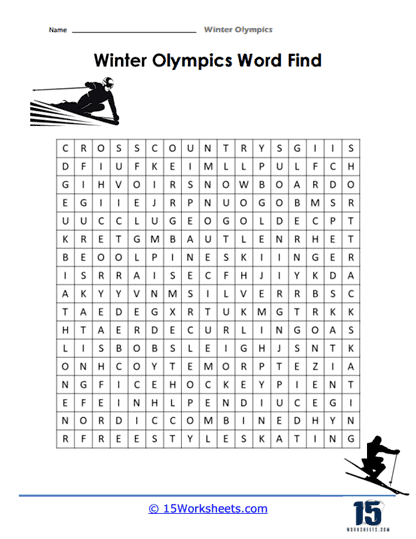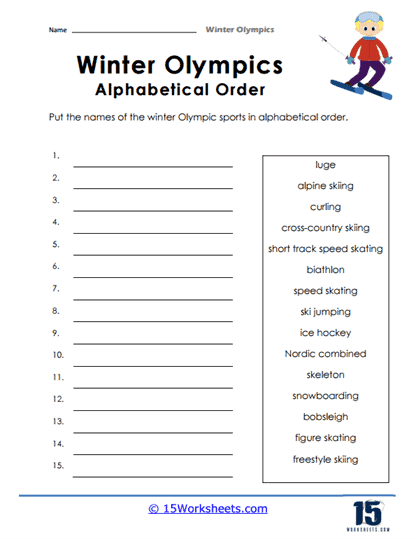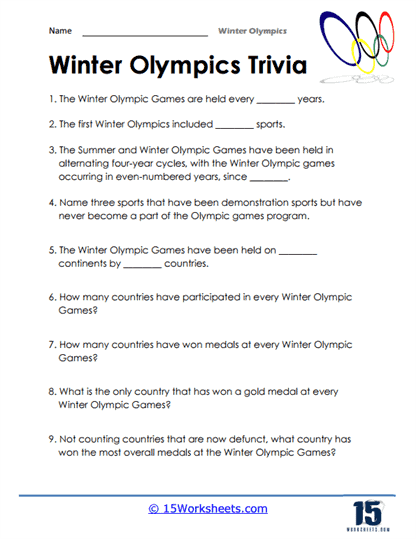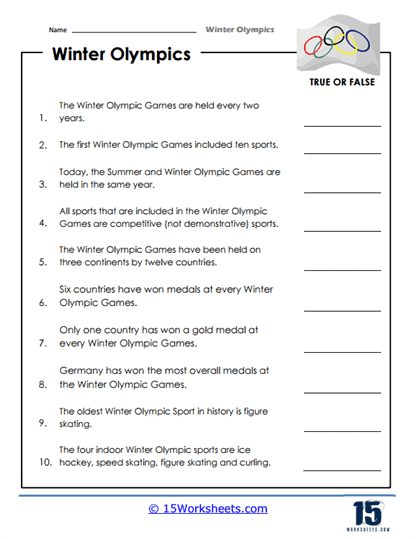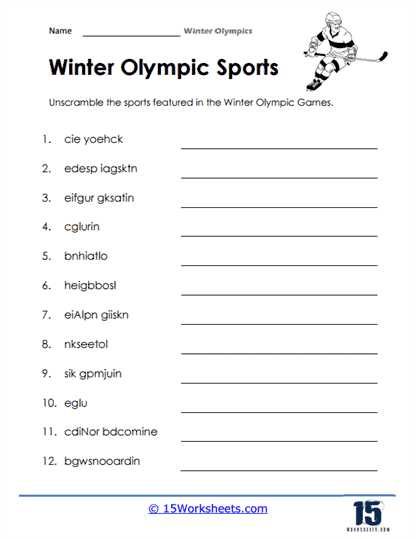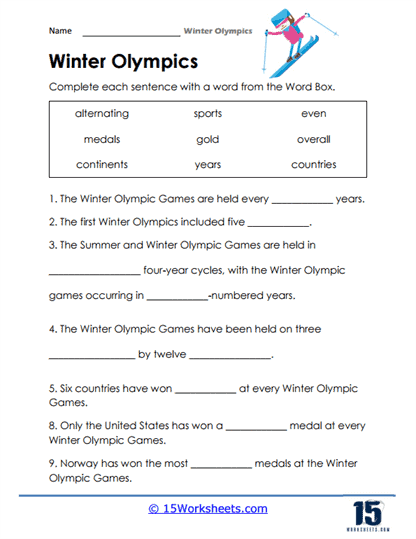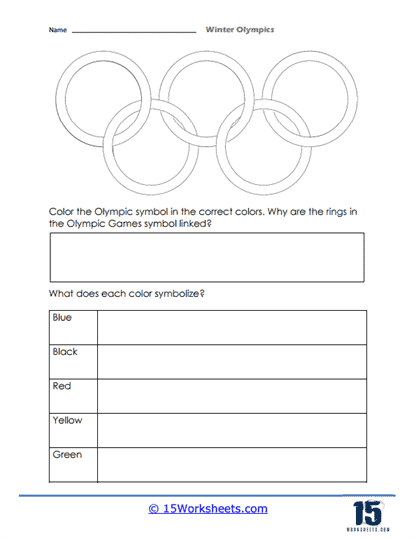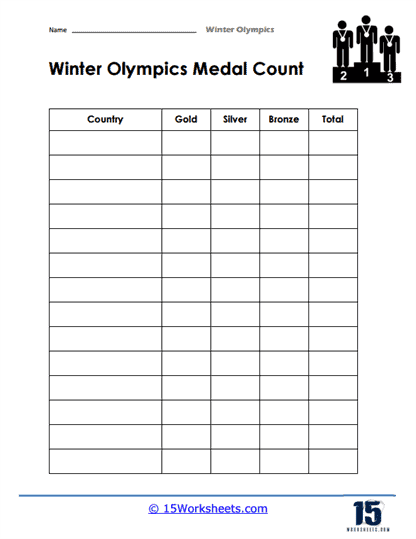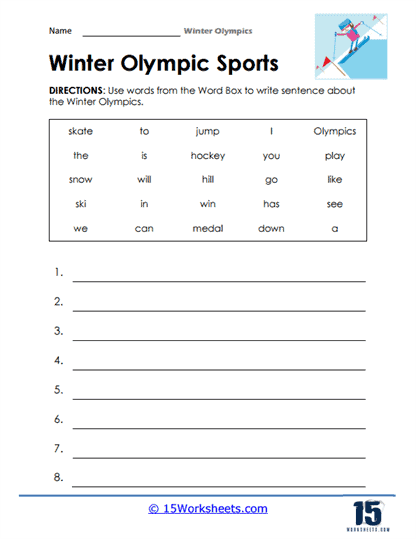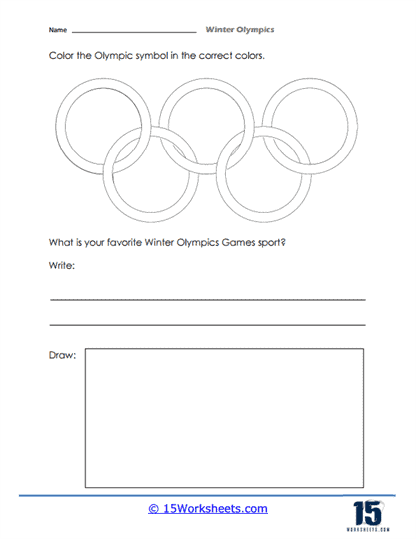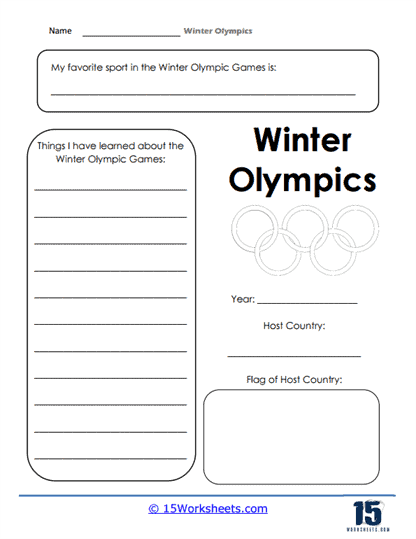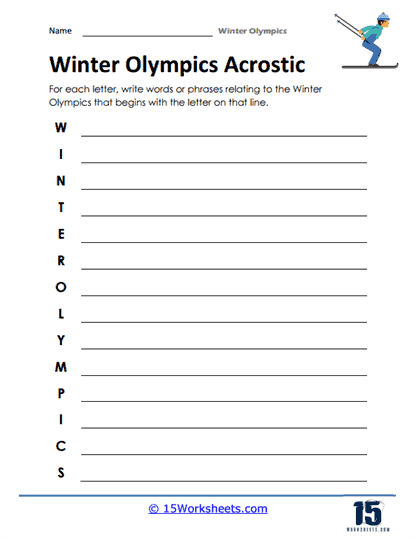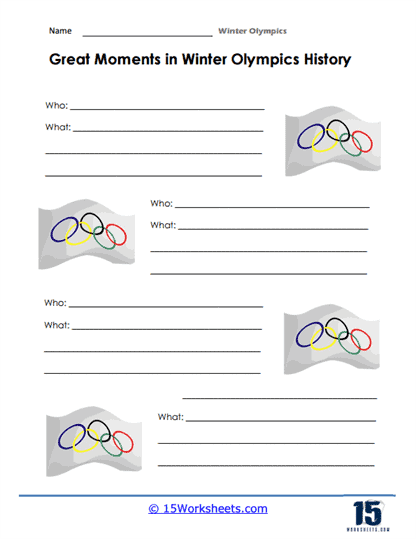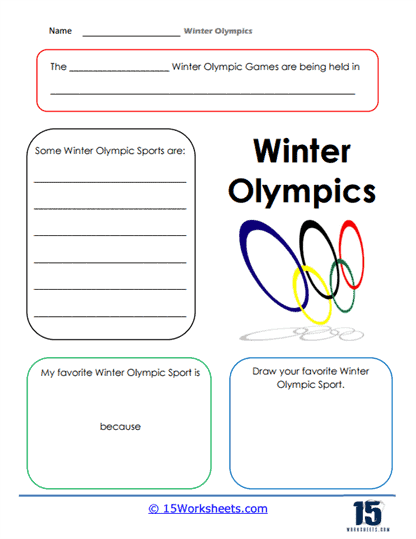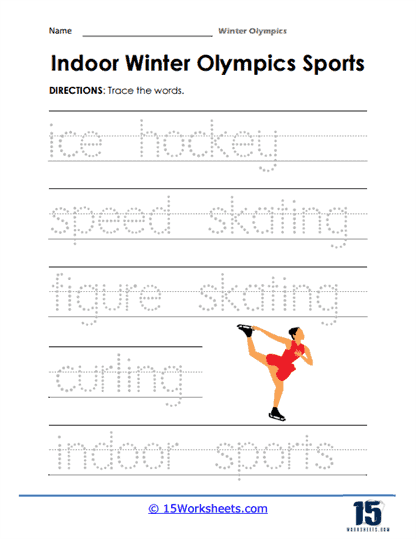Winter Olympics Worksheets
All About These 15 Worksheets
This series of Winter Olympics worksheets is designed to ignite students’ curiosity and deepen their understanding of this global sporting event, as they offer a comprehensive exploration of various aspects of the Winter Olympics. From vocabulary challenges and trivia quizzes to reflections and creative activities, students will delve into the thrilling world of winter sports, learn about the significance of the Olympic Games, and develop their critical thinking skills and creativity. This collection serves as an interactive gateway for students to discover the Winter Olympics, fostering a deeper appreciation for cultural diversity, global connections, and the pursuit of athletic excellence. Through these worksheets, students will:
- Familiarize themselves with Winter Olympics-related vocabulary through a fun word search activity;
- Practice their alphabetizing skills while arranging Winter Olympics sports names in alphabetical order;
- Test their comprehension of Winter Olympics facts through a fill in the blanks exercise;
- Unscramble jumbled words related to Winter Olympics sports, reinforcing their spelling skills and vocabulary retention;
- Explore the symbolism behind the colors used in the Olympic Games flag;
- Analyze and interpret data on Winter Olympics medal counts, graphically representing the performance of different countries;
- Craft their own descriptive sentences about specific Winter Olympics sports or athletes, showcasing their writing skills and creativity;
- Create their own acrostic poem using words related to the Winter Olympics, encouraging creative expression and wordplay;
- Explore significant moments in the history of the Winter Olympics, reflecting on the impact of remarkable achievements and groundbreaking events;
- Design their own infographic presenting interesting facts and statistics about the Winter Olympics;
- And practice their fine motor skills by tracing the outlines of various indoor Winter Olympics sports.
Through this dynamic series of Winter Olympics worksheets, students will embark on an exciting exploration of winter sports, cultural diversity, and global connections. By engaging with activities that enhance vocabulary, critical thinking, research skills, and creative expression, students will deepen their understanding of the Winter Olympics’ history, significance, and athletic achievements. This collection not only fosters a love for sports and healthy competition but also promotes cultural awareness, teamwork, and the values of perseverance and sportsmanship. Whether participating in word games, reflecting on great moments in Winter Olympics history, or designing infographics, students will be inspired to embrace the spirit of the Winter Olympics and celebrate the pursuit of excellence on and off the ice and snow.
What Events Take Place During the Winter Olympics?
The Olympic Games Beijing 2022 began on Friday, February 4th, and ended on Sunday, February 20th. Since the first games in 1924, the Winter Olympics has been continuously updated with new sports and events.
There three main categories of the Winter Olympics are:
- Ice Sports
- Alpine, Skiing, and Snowboarding Events
- Nordic Events
With a total of 15 sports in total, these 3 categories are sub-divided into:
Ice Sports
- Bobsled – two-man, women’s monobob, four-man, two-man, two-woman
- Curling – men’s, women’s, mixed doubles
- Figure skating – men’s singles, pairs, women’s singles, team, ice dancing
- Ice hockey – men’s, women’s
- Luge – men’s singles, women’s singles, mixed doubles, mixed team relay
- Short track speed skating – 500 meters, 1000 meters, 1500 meters, relays
- Skeleton – men’s, women’s
- Speed skating
Alpine, Skiing, and Snowboarding Events
- Alpine skiing – downhill, super combined, giant slalom, super-G, mixed team
- Freestyle skiing – aerials, ski cross, moguls, ski slopestyle, ski halfpipe
- Snowboarding – big air, slopestyle, snowboard cross, halfpipe, parallel giant slalom
Nordic Events
- Cross-country skiing – classical, freestyle, individual sprint, pursuit, relays team sprint
- Biathlon – individual, mass start, pursuit, sprint, relay events
- Nordic combined
- Ski jumping
Here’s a brief description of some of the most popular events that take place during the winter Olympics:
Curling
Curling has been a fan favorite event since it was officially introduced as an Olympic sport back in 1998. It is a team sport, played on ice, where both the teams attempt to slide stones, called the curling stone or rock, towards a target. The team that successfully stops the curler closest to the center of the target gets a point. A round-robin tournament starts off the event. This then heads into brackets for the medal rounds.
Biathlon
Cross-country skiing event with target shooting is what makes Biathlon a unique sport. The contestants have to ski through a racecourse as fast as they can and stop to shoot rifles at targets every few kilometers. Too many misses will cost them a penalty lap, adding minutes to their race time.
Bobsled
Bobsled or bobsleigh event has two- and four-person teams sliding down a natural or artificial incline, twisting through narrow iced tracks in a gravity-powered sleigh. The team who finishes fastest wins.
Snowboarding
Snowboarding is an extreme sport that involves four athletes descending through a snow-covered slope while riding a snowboard that is almost always attached to a rider’s feet. It is a test of the athletes’ core strength and stability. A snowboarder’s score is decided by a panel of judges, who rank the halfpipe run on a scale that goes up to 100.
Ski Jumping
Ski jumping is a death-defying winter sport in which competitors try to attempt the farthest jump after skiing down a specially designed curved ramp. The distances are typically in excess of 600 feet. Along with distance covered, competitors’ aerial style, positioning, landing, and other factors affect the final score.
Figure Skating
The first winter sport to be included in the Olympic Games, figure skating is one of the most-watched events. It is a balletic and acrobatic show in which individuals, pairs, or groups perform astonishing feats on ice while skating. The finesse of the acrobats and the feats they perform collectively decide the final points.

